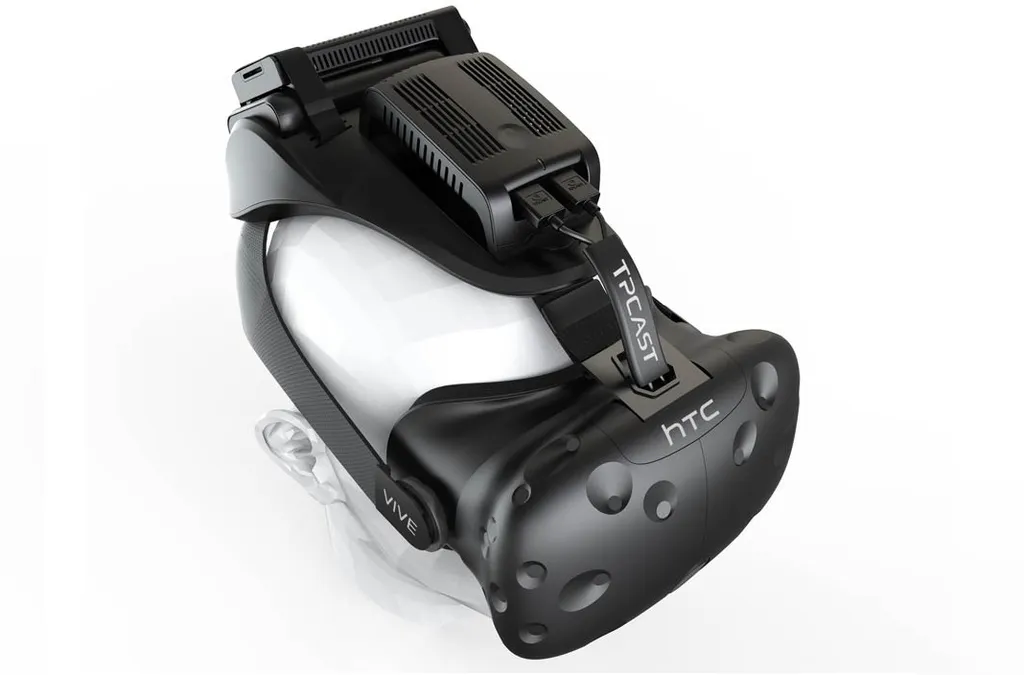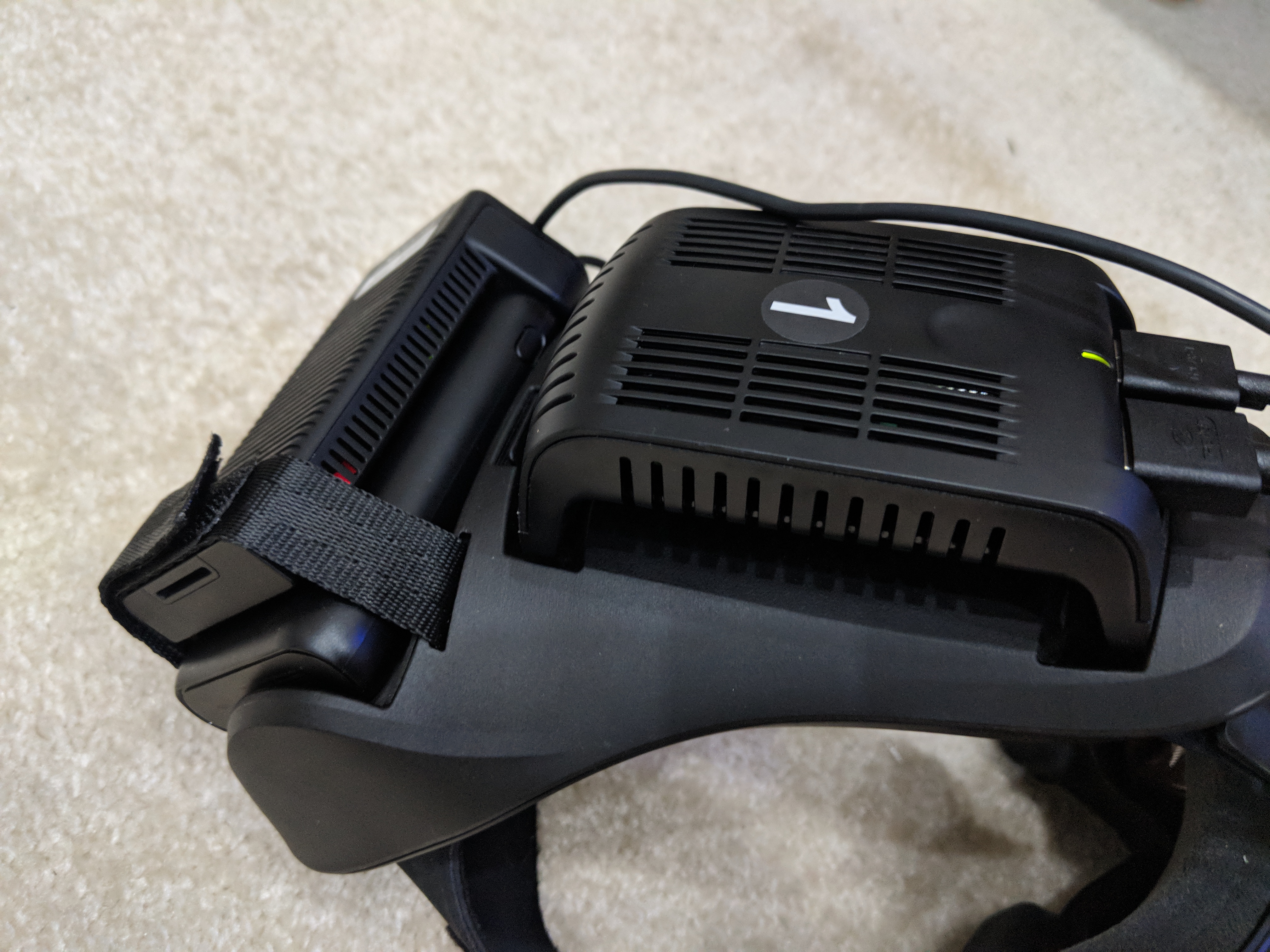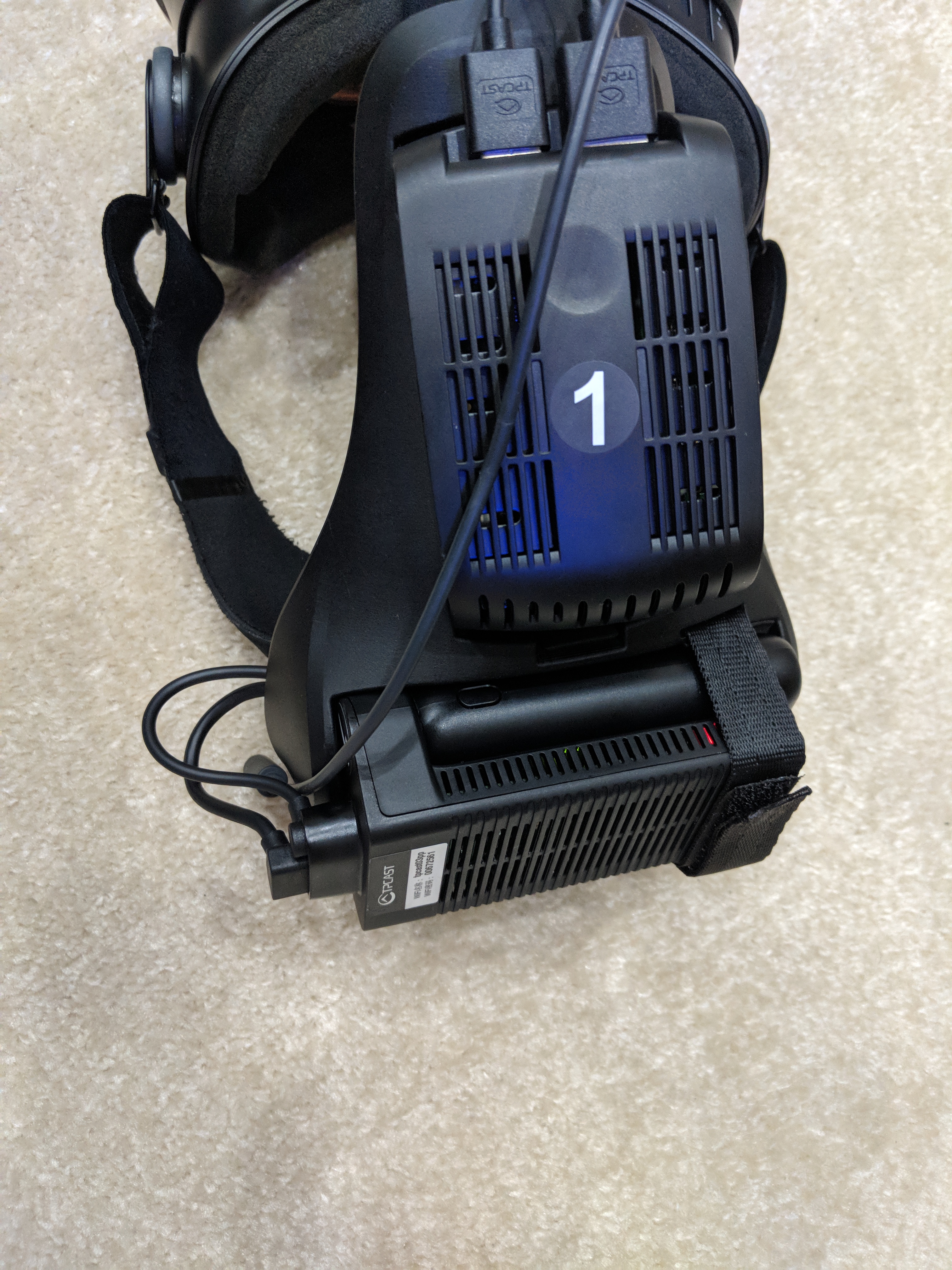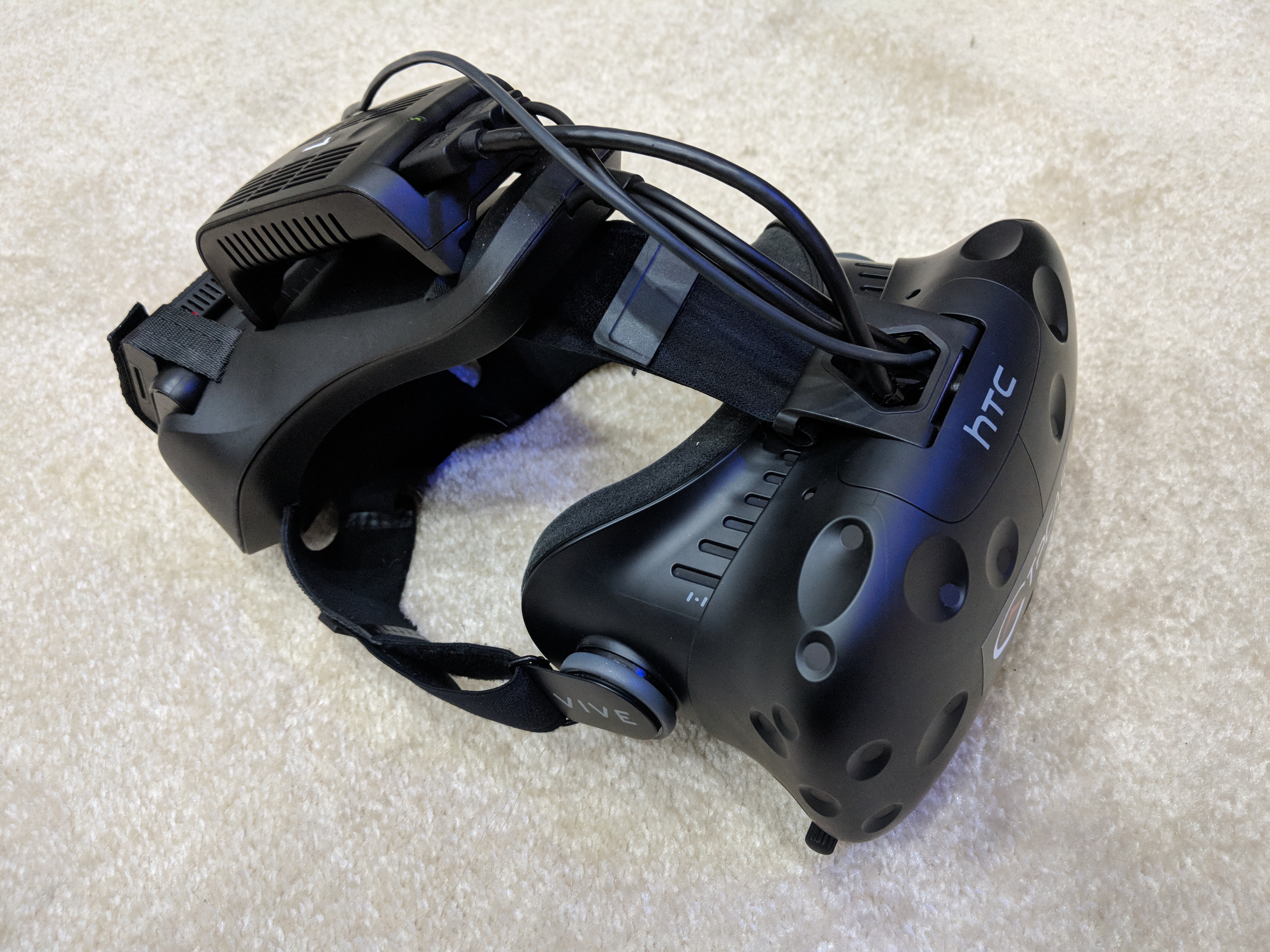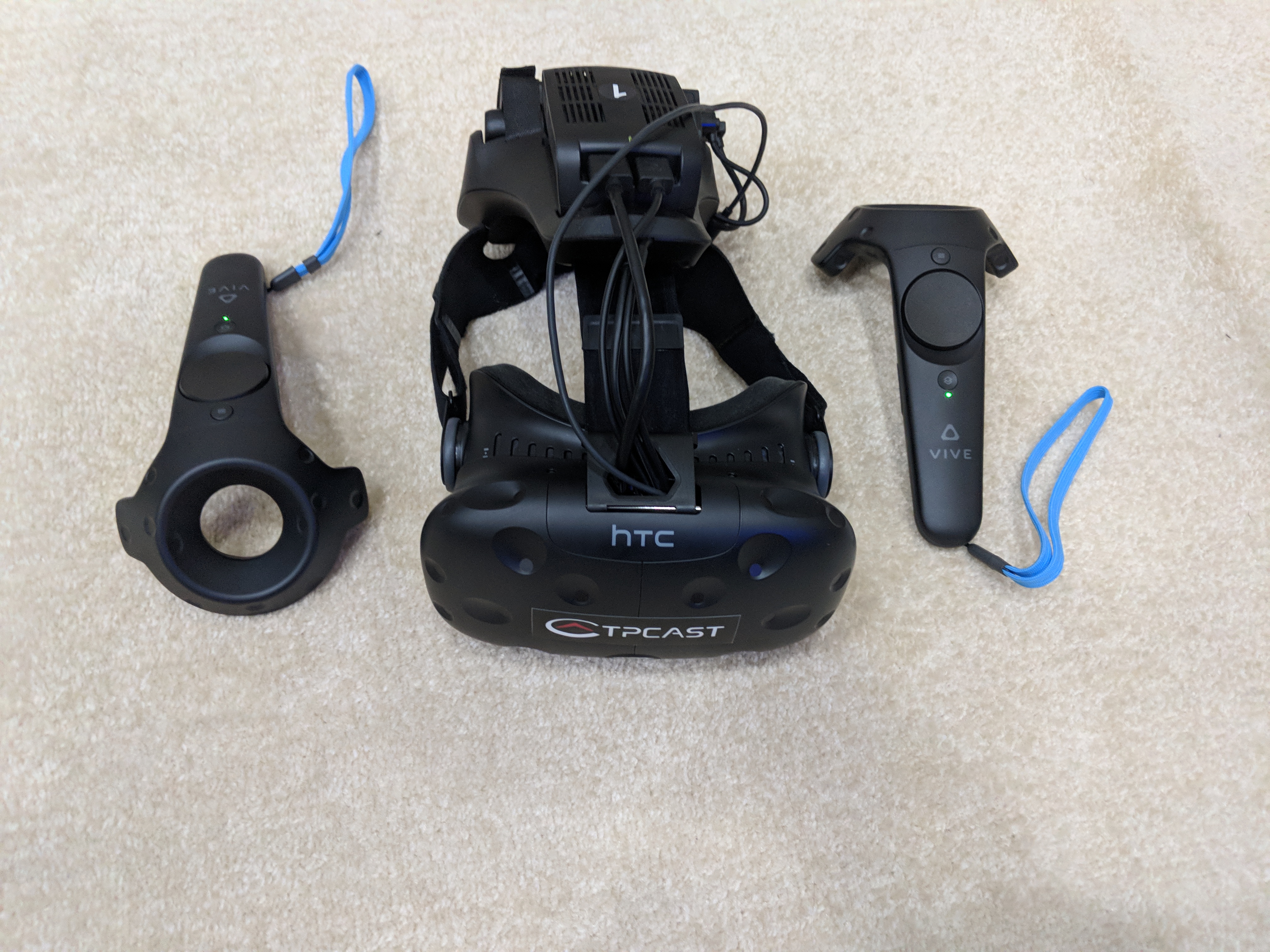Wireless VR is a major theme of CES 2018. In addition to Vive’s official Wireless Adapter, which was announced yesterday afternoon (hands-on impressions of that device here) along with the Vive Pro, we’re seeing solutions from a wide range of companies to cut the cord and untether headsets.
Today, we got the chance to try out the TPCast Plus adapter running on an HTC Vive (thought there is a model for the Rift too we’ve been told) at the TPCast booth on the CES show floor. The demo I played was Eternity Warriors VR, a fantasy-themed wave shooter, and I picked the ranged bow and arrow class so I could really test the movement and tracking accuracy of the system.
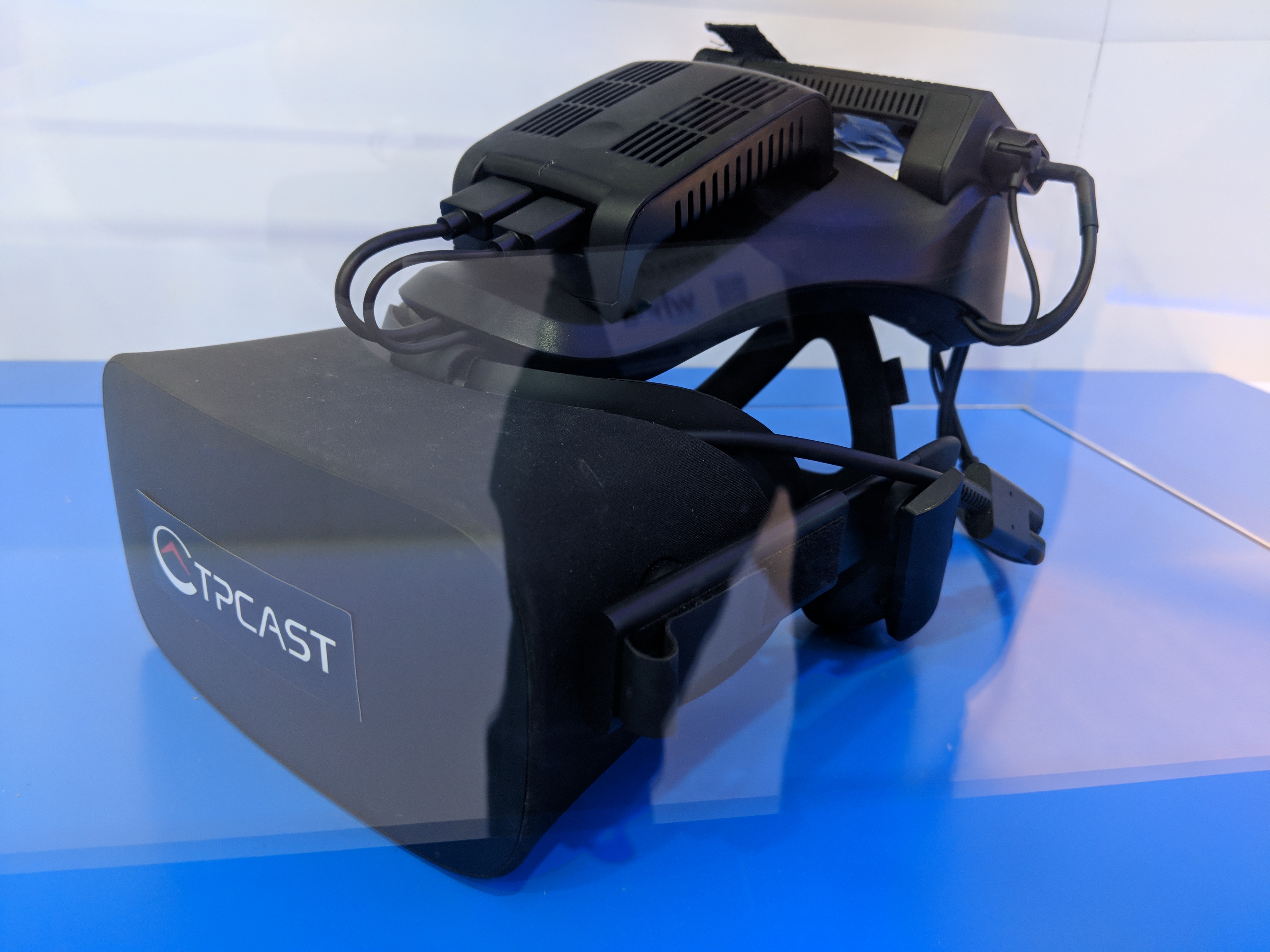
Thankfully I can report that the TPCast Plus works flawlessly in terms of its tracking. I never noticed any hiccups in that regard, it had no trouble keeping up with me, and always delivered buttery smooth performance. In that sense it’s hard to pick a winner between the TPCast Plus and the Vive Wireless Adapter for Vive owners because they both worked just as well as I’d hoped.
However, from a comfort and fit perspective it’s a very different story. The Vive Wireless Adapter (and the original TPCast adapter) have an external battery pack that attaches to your waist or sits in your pocket. It’s a minor inconvenience since a wire goes down to the pack to supply power, but it helps keep the attachment sitting on top of your head nice and light.
In the case of the TPCast Plus though, they’ve moved the battery to the back of a new headset strap right next to the rest of the adapter, which sits on top. Conceptually they’re trying to balance the weight and I commend that, but in practice it feels completely unstable.
If I moved my head too quickly I could feel the battery and adapter sort of wobble a bit from side to side. Not only does that simply feel uncomfortable because it tugs on the straps a bit, but it also breaks the immersion when I can feel hunks of plastic rubbing around on my head.
By the time I got to the booth for my demo they told me the device had already been left on for a couple of hours so it was extremely hot to the touch. There’s enough padding between the battery and your skull so that it doesn’t burn or anything, but I could certainly feel the warmth.
Since the tracking quality, video quality, and functionality of the TPCast Plus itself is virtually identical to the standard TPCast, it’s hard for me to recommend the Plus. Granted, this is all based off of a brief 15 minute demo. Perhaps it wasn’t attached securely, but even then the added weight is still an issue. Craning my neck back to admire the scale of environments in VR is one of my favorite things, but it just caused neck pain when wearing the TPCast Plus.
Perhaps in future iterations the battery can be smaller or less noticeable, but for now the original TPCast feels like a better bet based on my initial impressions. And we still don’t know the price point of the Plus, the Vive Wireless Adapter, or how it will affect the price of the original model. The one major plus (pun intended) that this new model does offer is that you can hot-swap the battery packs mid-play session without losing connectivity so it’s much quicker to switch in battery packs while spares are charging.
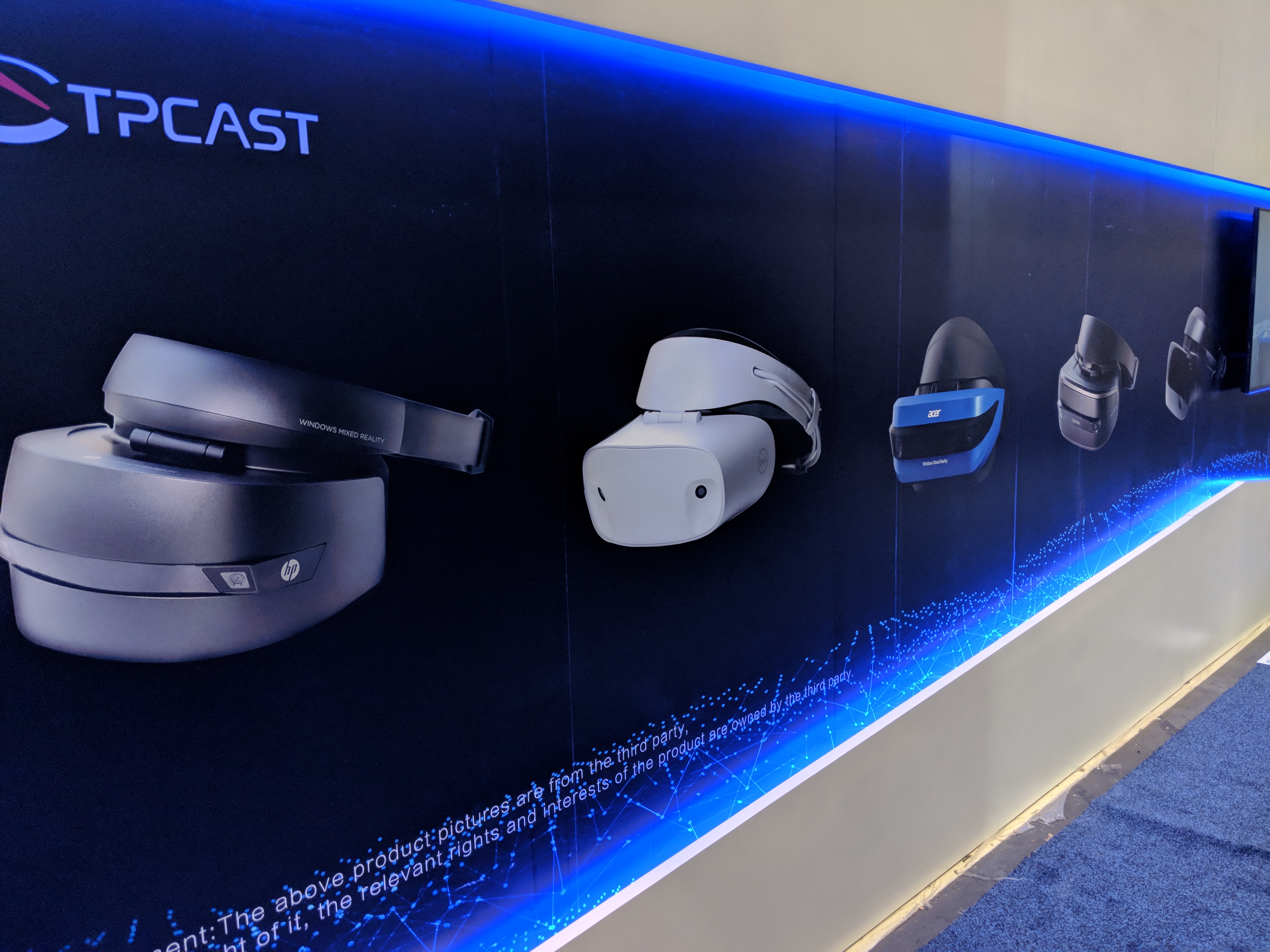
When pressed about the announcement of the new Vive Wireless Adapter yesterday, Udi Yuhjtman, General Manager of North America and Global Vice President of TPCast, was unphased. “HTC announced their relationship with Intel last year so it’s nothing new,” Yuhjtman said. “We’re still there, we still support it, our relationship with HTC is still strong, and we are providing a wireless adapter to any HMD, not just HTC.”
At CES, TPCast also announced that they will be providing their adapter as a wireless solution for all Windows VR headsets as well, such as the HP, Acer, Lenovo, Odyssey, and others. The Windows VR version of the TPCast was not available for media demos.
Let us know what you think of the TPCast Plus and other wireless VR solutions from what you’ve seen so far down in the comments below!

